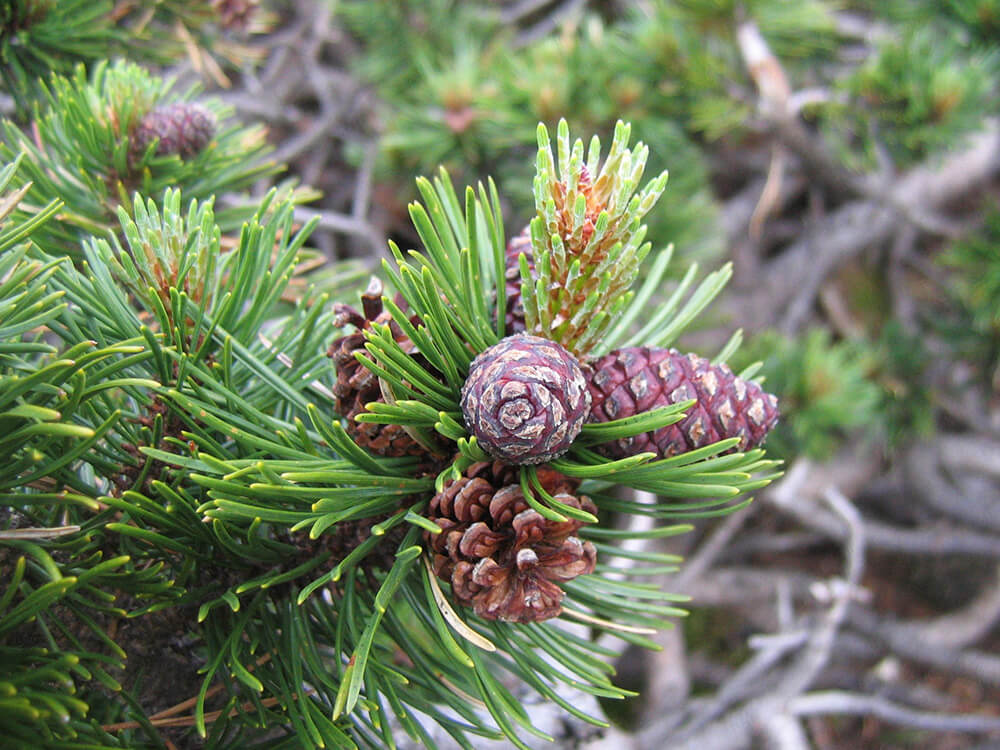- +033 2572 7171
- info@dhanvantary.com

4.5 Rating | 4500 Review

4.5 Rating | 4500 Review
Pinus mugo turra is also known as mountain pine / dwarf mountain pine, is an evergreen small tree or shrub or erect bush growing up to 4.5m (14ft) by 8m (26ft) at a very slow rate 2-3m per year. It is the most slow growing tree species in Europe. The species’ maximum age is about 250–300 years. It has spreading stems and can spread up to 10m. This dwarf mountain pine is more tolerant to cold climates than other European pines.

It has an extensive root system with many branches that holds loose soil thus preventing torrents and avalanche erosion on high mountains. It also acts as a bio-indicator for air quality monitoring. Pinus mugo turra is also an ancient herb, traditionally used for medicinal purposes for example in Romanian folk medicine, the leaf buds of Pinus mugo turra were used as a diuretic and antiseptic in urethritis and cystitis and as an anti-inflammatory in respiratory diseases in the form of infusion. In Europe, supplements are being made from the bark of pine which is rich in phytochemicals that are known to prevent many diseases.
Kingdom
Plantae
Phylum
Tracheophyta
Class
Pinopsida
Order
Pinales
Family
Pinaceae
Dwarf mountain pine scrub generally occurs in the mountainous region of Central and Eastern Europe at elevation of about 2000 to 2700m, and grows abundantly in the subalpine belt of the Eastern Alps and the Carpathians between elevations of about 1600 to 2200m.
The dwarf mountain pine requires very less water, high atmospheric humidity and a lot of sunlight to grow. It spreads over free-drained and low nutrient substrata, which lack nitrogen. Its main habitat is in massive fissured bedrock (such as limestone, dolomites, sandstone, gneiss and granite), block fields, alluvial fans and sand dunes. It can grow at the optimum temperature of about 5-35°C.
Flowers, buds, needles, shoots and cones
Resins obtained from the buds of the shrub can cause dermatitis in sensitive people.
Similar Indian Ayurvedic Herb
|
Herb Name |
Scientific Name |
Benefits |
Effects On Doshas |
|
Sarala/Chir pine |
Pinus roxburghii |
Asthma, bronchitis, remove sputum from respiratory passages has diuretic activity. |
Vata and Kapha balancing properties |
Further research is going on to explore more about Pinus mugo turra (Mountain pine) application for its exploitation in various fields. There is a need to compare this pine species with its other allies so as to gain consciousness about its unique features or benefits that one cannot take from the other herbs present.
